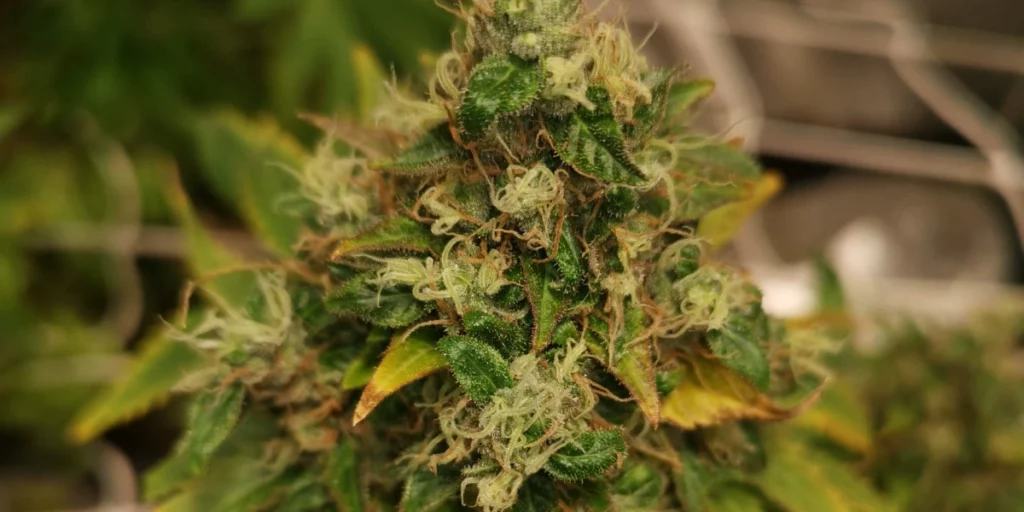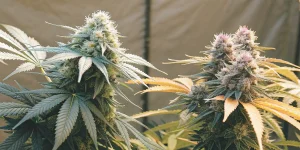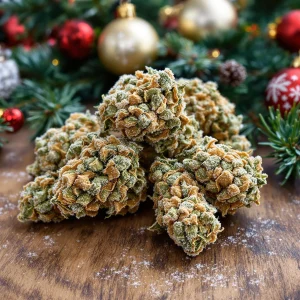White Lemon Strain: Exceptional Genetics and Effects
Origins and Genetics
White Lemon Strain is the result of a carefully engineered genetic blend that infuses the plant with vibrant lemon flavors and a mysterious, almost ethereal quality. Its genetics combine robust indica and sativa attributes with a distinctive twist that produces luminous, resin-rich buds. The strain’s auto-flowering trait makes it an excellent choice for growers with limited space, as it develops quickly and consistently, ensuring reliable quality and impressive yields.
The heritage of this strain caters to both recreational and medicinal users by promoting vigorous growth and high resin production. Growers appreciate its predictable performance, which simplifies the cultivation process and results in a standout harvest of luminous buds with a refreshing, citrus-forward aroma.
Effects and Potency
White Lemon Strain delivers a balanced high that simultaneously stimulates the mind and relaxes the body. With THC levels that typically range in the moderate to high spectrum, it produces an uplifting buzz that enhances focus and creativity while maintaining a gentle physical calm. Its flavor profile is defined by bright, tangy lemon notes with subtle herbal and earthy undertones, creating a uniquely invigorating aroma that is both refreshing and complex. Users report an experience that is energizing yet smooth, making it suitable for daytime activities as well as early evening relaxation.
Environmental Requirements for Growing White Lemon Strain
Setting Up the Growing Cannabis Space
Creating an optimal grow space is the first step to achieving high-quality White Lemon Strain buds. A well-organized area with proper ventilation, controlled lighting, and stable temperature and humidity conditions supports the plant’s natural growth. Whether you choose a dedicated grow room, a compact tent, or a small indoor setup, the space should be kept clean and equipped with essential tools such as fans, carbon filters, and timers. This careful arrangement minimizes plant stress and promotes vigorous, healthy development throughout the growth cycle.
A thoughtfully designed grow space maximizes light distribution and airflow, making routine maintenance tasks like watering and monitoring much easier. When every element is in place, managing your grow becomes straightforward, ultimately resulting in a robust crop of White Lemon Strain that rewards your careful attention and expertise.
Temperature and Humidity
Maintaining consistent temperature and humidity levels is crucial for White Lemon Strain. During the vegetative stage, it is ideal to keep temperatures between 70°F and 80°F to promote robust growth; during flowering, slightly lower temperatures help enhance resin production. Humidity should be maintained around 50–60% during early growth and then reduced to 40–50% during flowering to prevent mold and mildew. These precise environmental conditions facilitate efficient nutrient uptake and steady, healthy growth, ensuring a bountiful harvest.
Indoor Cannabis Cultivation
Advantages of Growing Indoors
Indoor cultivation offers complete control over the environment, which is especially beneficial for growing White Lemon Strain. This method protects the plant from unpredictable weather and pests while allowing you to fine-tune light, temperature, and humidity conditions with precision. Every variable, from nutrient delivery to airflow, can be carefully managed, resulting in uniform, high-quality buds even in limited spaces.
The predictability of indoor growing also facilitates year-round production. Whether in a compact grow room or a well-equipped tent, indoor setups enable consistent adjustments that lead to robust growth, enhanced resin production, and a final product that meets high standards of quality and potency.
Lighting Needs
For indoor cultivation, proper lighting is a cornerstone of success. Full-spectrum LED or HPS lights provide the energy needed for vigorous vegetative growth and dense bud development during flowering. Positioning the lights at an optimal distance from the canopy avoids heat stress while ensuring even light distribution across the entire plant. This setup promotes efficient photosynthesis, allowing White Lemon Strain to achieve its full potential and produce vibrant, aromatic buds.
Outdoor Cannabis Cultivation
Best Conditions for Outdoor Growth
When grown outdoors, White Lemon Strain thrives under sunny, warm conditions with ample natural airflow. Choose a location that receives at least six hours of direct sunlight daily; natural light enhances terpene development and intensifies the strain’s citrus flavor. Ensure the soil is well-draining and enriched with organic matter to support vigorous growth and high yields. Such conditions allow the plant to fully express its genetic potential and produce stunning, high-quality buds.
A favorable outdoor environment also involves selecting a site that provides some shelter from extreme weather, such as heavy winds or intense rain, while still offering plenty of sunlight. With careful site selection and proper management, outdoor cultivation of White Lemon Strain can yield impressive results that rival those achieved indoors.
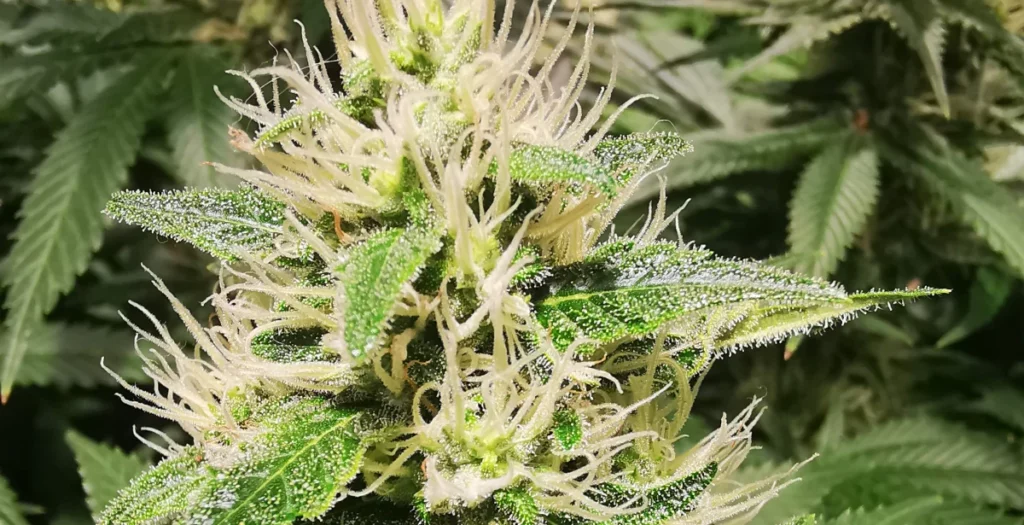
Advantages of Growing White Lemon Strain
Fast Growth Cycle
A key advantage of White Lemon Strain is its rapid growth cycle, enabling a quick transition from seed to harvest. This fast development allows for multiple cycles in a single year, making it ideal for growers with limited space or time. Its efficiency leads to timely yields and offers a practical option for busy cultivators seeking prompt results without sacrificing quality. The quick cycle also encourages continuous experimentation and refinement in cultivation techniques, ensuring every harvest is both impressive and consistent.
Exceptional Flavor and Potency
Renowned for its refreshing, citrus-infused flavor and balanced potency, this strain delivers a robust, aromatic experience with bright, tangy notes and subtle herbal undertones. Its moderate to high THC levels provide a well-rounded high that satisfies both recreational and medicinal users, ensuring each session is smooth, memorable, and thoroughly enjoyable. The distinctive flavor profile, combined with its reliable effects, sets this strain apart and makes it a popular choice among cannabis enthusiasts.
Problems in Cultivating White Lemon Strain
Overwatering
Overwatering is a common pitfall that can damage the delicate root system of this strain. Excess moisture leads to root rot and fungal infections that stunt growth and diminish bud quality. It is essential to allow the soil to dry slightly between waterings and use containers with proper drainage to maintain an optimal moisture balance. Adjust your watering schedule based on the plant’s actual needs rather than following a rigid routine.
Mold and Mildew
Mold and mildew are significant concerns during the flowering stage when dense buds create a humid microenvironment. High humidity and poor airflow can trigger fungal growth that damages the plant and reduces bud quality. To mitigate these risks, it is crucial to control humidity, improve ventilation, and promptly remove any affected areas. Regular inspections and timely environmental adjustments help preserve the overall quality and potency of the harvest.
Similar Strains White Lemon Strain
Lemon Skunk
Lemon Skunk is a vibrant auto-flowering strain that features a pungent, zesty lemon aroma blended with a subtle skunky edge. This strain produces dense, resinous buds in a compact structure, ideal for small grow spaces. It offers a balanced, uplifting high that energizes the mind while gently relaxing the body, making it a great alternative for those who enjoy a bright citrus experience with a twist.
Orange Sherbet Auto
Orange Sherbet Auto bursts with a refreshing, tangy flavor that combines lively lemon and orange notes with hints of herbal undertones. This strain’s rapid flowering cycle and high resin content yield impressive, aromatic buds. It provides an invigorating, clear-headed high that is perfect for daytime use, offering consistent performance and a sensory experience that rivals White Lemon Strain.
Lemon Haze Auto
Lemon Haze Auto delivers an enticing blend of sweet lemon and light haze aromas, creating a complex yet refreshing flavor profile. The strain’s auto-flowering nature ensures a quick, hassle-free cultivation process, producing dense buds with a potent, balanced high. Users enjoy its energizing effects paired with a smooth, mellow body relaxation, making it an excellent option for those seeking a unique citrus experience.
Week-by-Week Growth Plan for White Lemon Strain
Week 1 – Germination and Seedling Stage
Begin by soaking this strain seeds to initiate germination, placing them between moist paper towels in a warm, dark environment until taproots emerge, usually over several days. Once the taproots are visible, carefully transfer the seeds into small pots with a well-draining medium. Maintaining consistent warmth and humidity during this stage is essential to establish a robust root system that will support all future growth. Daily observation and gentle care will help ensure the seedlings develop steadily and set a strong foundation for the upcoming phases.
Week 2 – Early Seedling Growth
In week two, the seedlings start to show their first true leaves and gradually increase in size as they acclimate to their new environment. Provide gentle, indirect light and gradually increase the exposure to support effective photosynthesis. Ensure the soil remains moist but not waterlogged, maintaining a stable temperature to encourage healthy development. Monitoring the seedlings closely and making careful adjustments to watering schedules will help build the initial strength needed for the plants to thrive in the later stages of growth.
Week 3 – Continued Seedling Development
During week three, the seedlings grow larger and develop a more extensive root system while additional sets of leaves emerge. Increase light exposure gradually and maintain a consistent watering schedule to support steady and healthy development. This stage is critical for strengthening the overall structure of the plant and laying the groundwork for robust vegetative growth. Keeping the environment calm and stable will ensure that each seedling builds a solid foundation for the vigorous growth that is to come.
Week 4 – Vegetative Growth Begins
At the start of week four, White Lemon Strain enters the vegetative phase, showing noticeable increases in size and vigor. The leaves expand and the stems thicken as the plant establishes a solid framework that will eventually support heavy bud development. Adjust the light intensity and begin a structured watering schedule, using a low dose of nitrogen-rich fertilizer to encourage rapid vegetative growth. This phase marks the transformation from fragile seedlings to a robust, resilient plant.
Week 5 – Accelerated Vegetative Growth
During week five, the vegetative growth accelerates as the plant expands rapidly with increased foliage and stronger branches. Continue regular feeding and maintain a steady watering schedule while introducing low-stress training techniques to shape the canopy for even light distribution. This phase is crucial for building a resilient structure that will support dense, resinous bud formation later. The rapid expansion during this week signals that the plant is well on its way to reaching its full potential.
Week 6 – Preparing for Flowering
In week six, early signs of flowering begin to appear, with small bud formations emerging alongside subtle changes in leaf coloration. Adjust the nutrient regimen by reducing nitrogen and increasing phosphorus and potassium to support the initiation of bud development. Continue using low-stress training and closely monitor environmental conditions to ensure the plant remains stress-free during this sensitive transitional phase. These careful adjustments set the foundation for a smooth transition into flowering and high-quality bud formation.
Week 7 – Transition to Flowering
Week seven marks the clear transition into the flowering phase. For indoor growers, this is the time to switch to a 12-hour light and 12-hour dark schedule, prompting this strain to redirect its energy toward bud production. Small buds begin to emerge as the plant shifts from vegetative growth to flowering, and nutrient schedules are adjusted to favor bloom-specific supplements while reducing nitrogen levels. Stable conditions during this critical period help minimize stress and prepare the plant for prolific bud development.
Week 8 – Early Flowering
During week eight, the early stages of flowering become more pronounced as buds form and begin to increase in density. The plant channels energy into developing thicker bud clusters, and nutrient delivery is adjusted to favor phosphorus and potassium to support this growth. Consistent monitoring for any signs of stress or nutrient deficiency is essential during this stage to ensure that the buds develop properly. The progress made during this week sets the stage for a successful flowering phase.
Week 9 – Mid-Flowering
In week nine, the buds become more prominent as resin production increases and trichomes start to form, gradually shifting from clear to milky. Adjustments in nutrient management are made to support robust bud development while preventing nutrient burn. Frequent inspections during this pivotal stage ensure that environmental conditions remain optimal, helping the plant steadily progress toward its peak production phase. This mid-flowering period is critical for setting up the final quality of the harvest.
Week 10 – Bud Development
By week ten, the buds are well-formed and continue maturing in both density and size. The plant’s resin production intensifies, and the aromatic profile becomes increasingly pronounced, adding complexity to the overall flavor. Maintaining careful nutrient management and stable environmental conditions at this stage is essential to support full bud development, ensuring that every bud reaches its optimal potential. Regular monitoring and timely adjustments help prevent any setbacks during this critical phase.
Week 11 – Late Flowering
In week eleven, the plant enters the late flowering phase, with trichomes beginning to shift further to include hints of amber. Buds become denser and more resinous, signaling that the optimal harvest window is approaching. Continue to maintain balanced nutrient delivery and stable environmental conditions to support the final burst of bud maturation. Frequent checks during this stage help address any last-minute issues, consolidating the plant’s overall quality and preparing it for harvest.
Week 12 – Harvesting Time
Week twelve is when White Lemon Strain is ready for harvest. At this stage, trichomes display a mix of milky and amber hues, and the buds are dense and richly resinous. Carefully cut the plant, trim away any excess foliage, and hang the branches in a dark, well-ventilated space to dry for 7–10 days. This drying phase is critical for preserving both the flavor and potency of the buds, setting the stage for an effective curing process.
Week 13-14 – Curing the Buds
During weeks thirteen and fourteen, focus on curing the harvested buds to enhance their flavor and potency. Once the buds are dried, transfer them into airtight glass jars and open the jars daily during the first week to release excess moisture, gradually reducing the frequency over the following week. This careful curing process allows the buds to stabilize and develop a smoother, richer profile, ensuring that the final product delivers an exceptional sensory experience that reflects the meticulous care invested throughout the entire growth cycle.
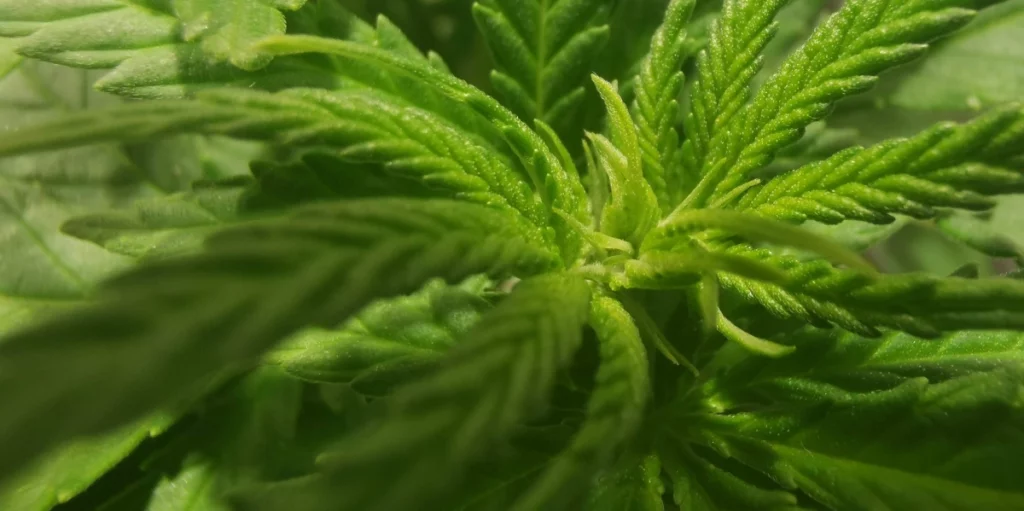
FAQs about White Lemon Strain
What is the typical THC content of White Lemon Strain?
White Lemon Strain typically contains THC levels ranging from 15% to 22%, offering a balanced high that delivers an energizing buzz with gentle body relaxation. This consistent potency is achieved through careful breeding and precise cultivation practices, ensuring that each harvest provides a refreshing yet satisfying experience for both recreational and medicinal users.
How long does it take for White Lemon Strain to flower?
White Lemon Strain generally flowers within eight to ten weeks after switching to a 12/12 light cycle. This relatively short flowering period is ideal for growers seeking quick turnovers and efficient production. The auto-flowering trait ensures a smooth transition from vegetative growth to bloom, resulting in consistent yields that are especially attractive for cultivators with limited space or time.
What flavor profile can I expect from White Lemon Strain?
White Lemon Strain offers a refreshing, citrus-infused flavor profile characterized by bright, tangy lemon notes combined with subtle herbal undertones. Its aromatic buds deliver a crisp, invigorating taste that evolves on the palate, providing a memorable sensory experience that perfectly complements its balanced, uplifting effects.

